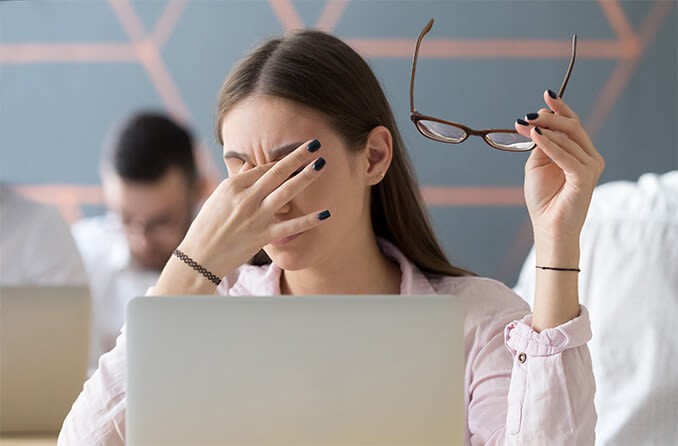Eye strain is a common problem that many people experience. Symptoms of eye strain can include fatigue, headaches, and blurred vision.
There are several things that you can do to relieve eye strain. One thing that you can do is make sure that you take breaks often.
You should also make sure that your work environment is properly lit. You can also try using artificial tears or anti-glare screens.
If you are suffering from Eye Strain you can try some medications which are available in market now, Must Buy from Its Official website only Like Theyavue.com.
Whenever you feel a migraine coming on, the first thing you should do is take some ibuprofen and lay down. But what if the pain isn’t just in your head?
If you suffer from eye strain, there are a few things you can do to relieve it. First and foremost, make sure that your work environment is comfortable for you.
If you’re at a computer all day long, try to get up and move around every 30 minutes or so to break up the monotony.
This will help you to keep your eyes healthy and prevent eye strain. There are also some tricks that you can use in order to relieve eye strain, such as looking at an object in the distance instead of up close.
This will allow your eyes to relax and not feel strained. You can also try taking a break from the computer and doing something else, such as reading a book or watching television.
This will help to relax your eyes and relieve some of the eye strain that you are feeling. Most of all, make sure that you take care of your eyes.
You should always wear your glasses when you are doing anything that requires focus, and you should also take frequent breaks from the computer.
In order to prevent eye strain, do not wear your glasses when you are playing games.
Symptoms
- Eyestrain signs and symptoms include:
- Sore, tired, burning or itching eyes
- Watery or dry eyes
- Blurred or double vision
- Headache
- Sore neck, shoulders or back
- Increased sensitivity to light
- Difficulty concentrating
- Feeling that you cannot keep your eyes open
Causes
- Common causes of eyestrain include:
- Looking at digital device screens
- Reading without pausing to rest your eyes
- Driving long distances and doing other activities involving extended focus
- Being exposed to bright light or glare
- Straining to see in very dim light
- Having an underlying eye problem, such as dry eyes or uncorrected vision (refractive error)
- Being stressed or fatigued
- Being exposed to dry moving air from a fan, heating or air-conditioning system
Computer And Digital Device Use
Extended use of computers and other digital devices is one of the most common causes of eyestrain. The American Optometric Association calls this computer vision syndrome, or digital eyestrain. People who look at screens two or more hours in a row every day have the greatest risk of this condition.
Computer use strains eyes more than reading print material because people tend to:
- Blink less while using computers (blinking is key to moistening the eyes)
- View digital screens at less than ideal distances or angles
- Use devices that have glare or reflection
- Use devices with poor contrast between the text and the background
In some cases, an underlying eye problem, such as eye muscle imbalance or uncorrected vision, can cause or worsen computer eyestrain.
Some other factors that can make the condition worse include:
- Glare on your screen
- Poor posture
- Setup of your computer workstation
- Circulating air, such as from air conditioning or a nearby fan
Complications
Eyestrain doesn’t have serious or long-term consequences, but it can be aggravating and unpleasant. It can make you tired and reduce your ability to concentrate.
